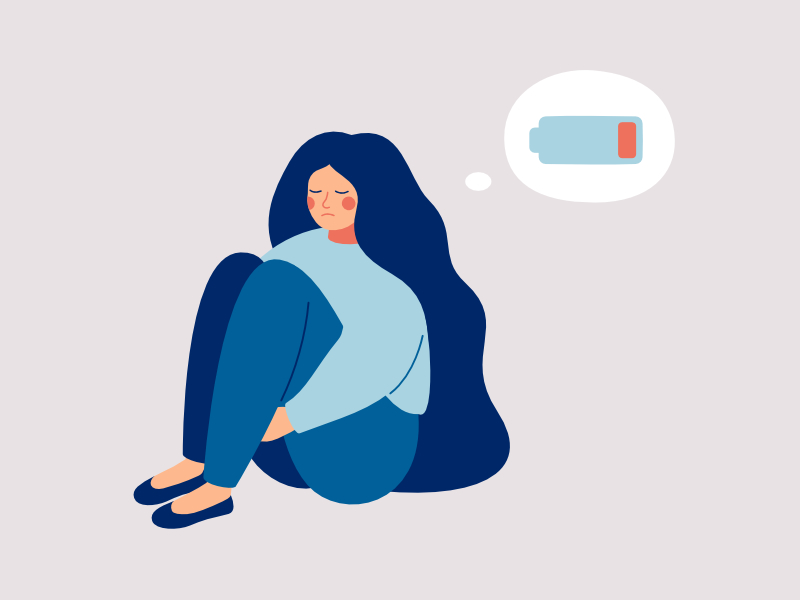Rise in Mental Health Challenges for Children & Youth – Miami-Dade Spotlights National Trends
Every mass shooting over the last four months has been a trigger for fear and anxiety among young people, says one psychiatric nurse in Miami-Dade about the kids he sees. It presents as anger and defiance, but more discipline isn’t an effective response. That’s only one of several challenges amidst a nationwide increase in mental illness among children and youth. Medical experts, counselors, parents draw on their expertise and personal experience to explain the rise and to discuss what young people need, what parents and guardians can do, what services people can turn to.

This is the second of two briefings on mental health EMS coordinated, June 17, in partnership with the National Alliance on Mental Health (NAMI)-Miami Dade.
Speakers include – Joshua Ho, Program Director for Miami-Dade County Asian American Advisory Board, former middle school math coach and dean of discipline and father of three; Eddy Molin, psychiatric nurse, Jackson Health System Miami Estephania Plascencia, Youth Program Coordinator, NAMI Miami-Dade; Beth Jarosz, Program Director in U.S. Programs and Acting Director for KidsData, Population Reference Bureau; and Susan Racher, Board President of NAMI Miami-Dade (National Alliance on Mental Illness).
Susan Racher, board president of NAMI Miami-Dade gave a formal welcome and co-hosted the briefing.
“NAMI Miami-Dade offers education classes for family members with loved ones with mental health conditions. We offer support groups for individuals with mental health conditions and support groups for their family members. We offer education classes for individuals with mental health challenges and we have a warm line that will connect people in the community with our resources and with our programs,” open Racher.
“We also have robust prevention programs and a very robust suicide prevention program that that educates about warning signs, how to talk to a loved one about self-harm and suicide, how to help a friend, and when, where, and how to access resources,” said Racher.
“We track child well-being, while kids data focuses on California, there is a ton of national data plus research that is relevant regardless of where you are,” said Beth Jarosz, program director of Population Reference Bureau.
She shared data on suicide rates, hospitalizations, and overdoses, “The suicide rate for 15 to 19-year-olds is nearly 60 percent higher in 2020 than it was in 2007. The suicide rate for 10 to 14-year-olds in 2020 is more than triple the rate in 2007.”
“To put Florida’s rise into context, compared with the three other largest states in the U.S., from 2010 to 2020 rates in California rose by about 33; rates in New York barely changed; rates in Texas rose by almost 80 percent; and rates in Florida rose by more than 100 percent,” said Jarosz.
“In Florida, youth suicide rates are highest for White and for Asian and Pacific islander youth. Rates for Black and Hispanic or Latino youth are similar, but rates for Black youth are rising fast, they have more than or they have doubled in the past two decades and most of that increase was just in the past 10 years.
“The suicide rate is just one indicator of the youth mental health crisis. Self-inflicted injury hospitalizations have been rising nationwide. They more than doubled between 2009 and 2020. Unintentional poisoning deaths, most of which are drug overdoses, had been stable but they rose sharply during the pandemic,” said Jarosz.
“Indigenous youth who experience childhood adversity like of suicide in the family, or abuse, or living with someone with substance abuse problems, are at higher risk. LGBTQ youth, youth who experience homelessness or who are in out of home settings like foster care are at increased risk, as are youth who experience bullying,” said Jarosz.
“There are specific policy recommendations to address team mental health. We can destigmatize and expand access to mental health care. We can replicate what works, look at states like New York, where there hasn’t been an increase and figure out what those states are doing, what policies do they have, and replicate those in places where rates are rising faster. Reduce childhood adversity. Discrimination and difficult life circumstances increase the risk of mental health challenges later in life, and we can make those changes and break the intergenerational cycle of violence and center the needs of youth who are at risk,” said Jarosz. (For more information, visit kidsdata.org).
Estephania Plascencia, a youth program coordinator with NAMI Miami-Dade shared her personal experience – “I was diagnosed with chronic depression and anxiety approximately six years ago, but I started showing signs of my mental health conditions ever since I was in elementary school. I was a very apprehensive kid, felt that everything that I did needed to be perfect otherwise I would get really bad anxiety attacks that manifested in palpitations, sweating, stomachaches, nausea, and even really bad meltdowns.
“At the same time, I had issues concentrating, struggling academically. Enter middle school, high school, and the symptoms were still there. They were expressing themselves in different ways until I graduated from college.
“It was until someone close to me convinced me to seek professional help, and after 18 years of struggling with symptoms, I was on my way to recovery.
“NAMI played an important and fundamental part in my recovery. They helped me realize I was not alone, it became part of my network/support network/family and provided useful information about the resources in the community that I really needed to know,” said Plascencia.
Joshua Ho provided the perspective of a parent.
Eddy Molin, a psychiatric nurse said, “Sometimes, we will say it’s important to be on medication. To do this, to do that, but sometimes it may be tiring, and we have to understand that. Also support the person so they can come back and continue with treatment we want for them and shell love. Love is the game, love is the key.”
Compassion, commitment, and care can make all the difference in helping someone who is coping with mental health, whether a child or an adult, the rules don’t change.


